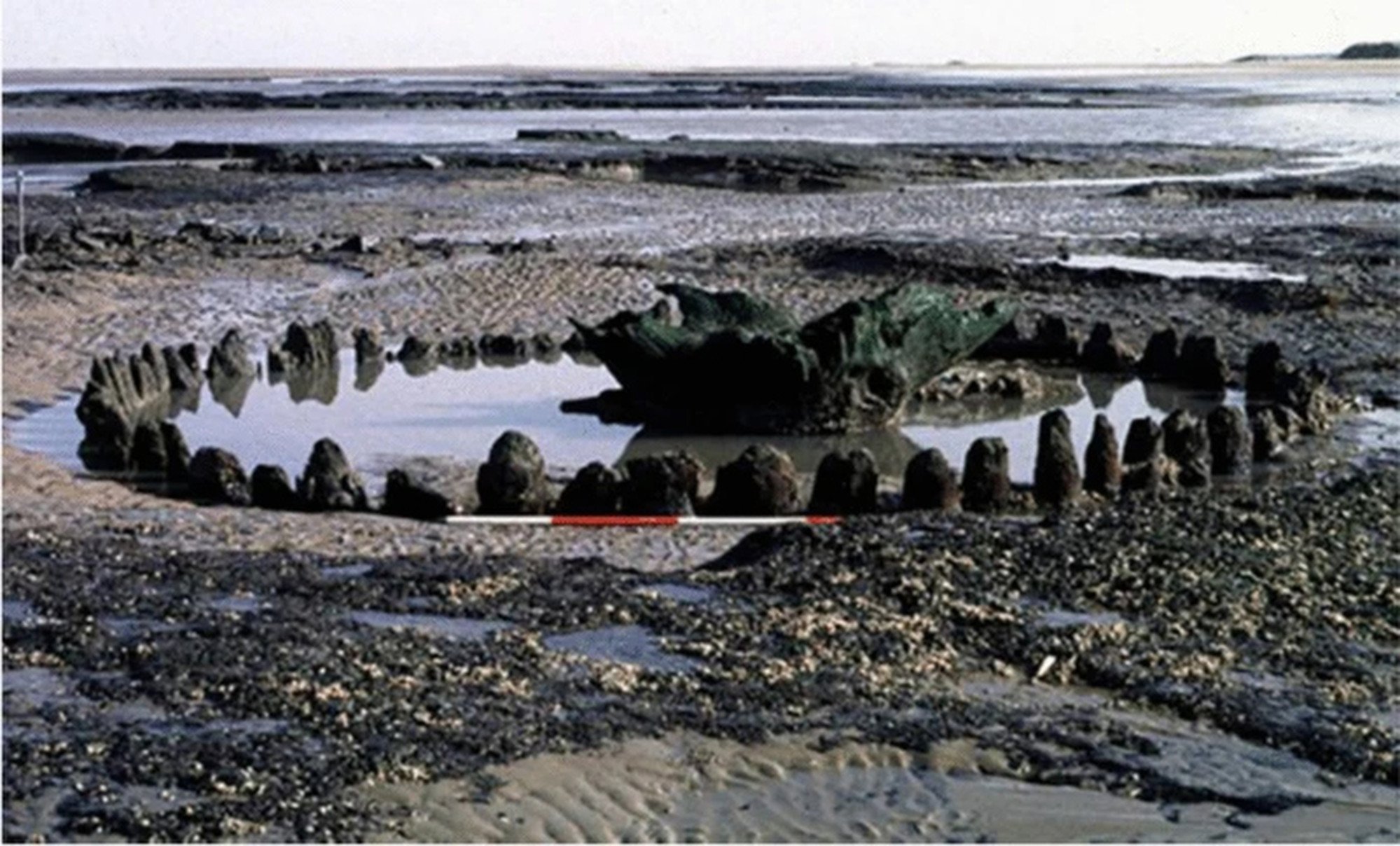
STONEHENGE OF THE SEA BUILT 4,000 YEARS AGO AS A PRAYER FOR CLIMATE CHANGE AMID EXISTENTIAL THREAT
- By tapping into folklore, UK researcher reveals secret of two enigmatic English monuments
An ancient UK monument that bears a striking similarity to Stonehenge and once stood for centuries on an English beach has long baffled archaeologists about why it was built.
The enigmatic site was nicknamed "Seahenge" but, unlike its namesake, actually contains two circular monuments believed to have been built in 2049 BC.
The two sites, named Holme I and Holme II, respectively, were likely used for separate but connected rituals designed as a prayer for a warmer climate, said David Nance, a researcher at the University of Aberdeen in Scotland and the author of the project published in the peer-reviewed Geojournal in April.
Do you have questions about the biggest topics and trends from around the world? Get the answers with SCMP Knowledge, our new platform of curated content with explainers, FAQs, analyses and infographics brought to you by our award-winning team.
"Holme I was built to house a cuckoo to keep it singing and prolong the summer, while Holme II was a human sacrifice to persuade [a] goddess to stop the cold weather," he told the Post.
Holme I was a prehistoric timber circle with an upturned oak stump placed in a pit at its centre. It was discovered in 1998 in Norfolk, England, and the monument was excavated. Its pieces are now on display at a local museum.
An adjacent timber circle, Holme II, was a larger circle surrounding large oak logs laid flat in the centre. There was a controversy about removing it, and part of it has since disappeared.
Nance told the Post that the monuments were built during "the coldest known period since the Ice Age" and that the people living in England at the time were in a "dire" situation.
"One failed harvest and famine sets in," he said.
Nance said that the Seahenge timbers were felled at the same time - springtime 2049 BC - and that the timbers were aligned with sunrise during the summer solstice.
"It seems most likely that these monuments had the common intention to end [winter's] existential threat, but they had different functions."
The interpretation that Holme I was designed to trap a cuckoo bird and Holme II was meant for sacrifice was an important distinction of Nance's research because he leveraged regional folklore as a core component of the scientific process.
Folklore is important but mistrusted in archaeology, as it can offer insights into the religious beliefs and superstitions of the time, but it can also lead researchers down the wrong path if they are not diligent about the methodology.
Nance, who is also writing a book titled The Cuckoo, the King and the Queen of Heaven about the religious beliefs of the ancient Britons, blended folklore with analysis of data from climatic, environmental, astronomic and biological evidence, as well as research into place names.
The ancient peoples would have considered that their deteriorated climate was due to the displeasure of the gods.
So, Holme I was built to enclose an unfledged bird, the cuckoo, which symbolised male fertility. In an age when bird migration was unknown, it was believed that the birds stopped singing on the summer solstice and went to their winter home, taking the summer with them.
Holme I mimicked the two places where cuckoos were thought to spend the winter: in holes in trees or "the bowers of the Otherworld" represented by the upturned tree stump. By enclosing the bird, the Britons hoped that the bird would keep singing, prolong the summer and slow the onset of winter.
The ritual is remembered in folklore as "penning the cuckoo", where an unfledged cuckoo was "placed into a thorn bush, and the bird was 'walled-in' to extend the summer, but it always flew away."
Holme II appears to be a mortuary structure that housed the body of a ritually murdered "sacred king", a champion of the local fertility goddess associated with Venus.
"The sacrificed sacred king was in a coffin that was aligned with sunrise at Samhain (now Halloween) when Venus was visible, having risen shortly before the sun," said Nance.
The intention was to appease the goddess and end the cold period.
Nance said this goddess, recorded as the "Queen of Heaven", was a "thread of continuity from the Stone Age right through to Christianity when she was absorbed as a series of parish saints."
More Articles from SCMP
Cooling costs soar in Japan, ‘lovebugs’ swarm South Korea as East Asia bakes in high heat
Hong Kong’s PLA garrison to take part in joint China-Laos military exercise
Marcos Jnr’s sister says China planning to target Philippine sites, is Imee Marcos ‘warmongering’?
Hong Kong’s New World, Far East slash prices at Pavilia Forest I flats to 8-year low
This article originally appeared on the South China Morning Post (www.scmp.com), the leading news media reporting on China and Asia.
Copyright (c) 2024. South China Morning Post Publishers Ltd. All rights reserved.
2024-07-04T12:24:08Z dg43tfdfdgfd